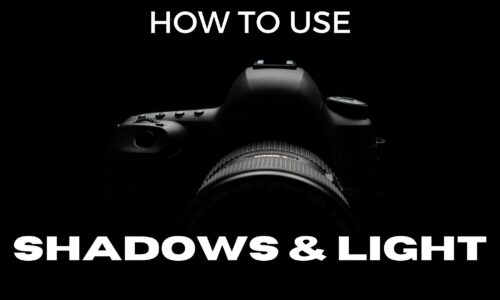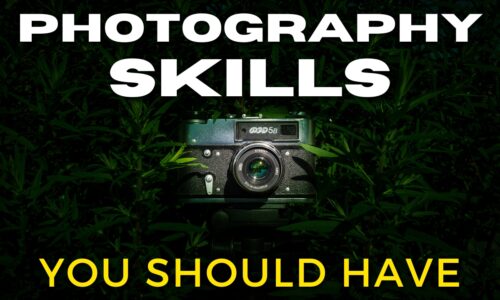How to Build a Photography Portfolio as a New Photographer
Whether you’re a student, a hobbyist, or a business owner, every photographer should have a curated portfolio that shows off your best work.
Your best photos deserve to be set aside and displayed in a photography portfolio. Plus, it’s a great way to document your growth and creative journey as a photographer!
Imagine your portfolio as this window into your life as a professional.
You should be proud and want to show off your skills across different subjects and situations.
And you can also share it with potential clients and employers or other photography enthusiasts to give them a glimpse of your style, versatility, and photo-taking ability.
So, let’s review how to build a photography portfolio as a new photographer.

Key Takeaways
- A well-presented portfolio highlights photography skills and style.
- Focus and niche specialization in a portfolio resonate with the intended audience.
- A professional portfolio bridges the gap between photographers and business opportunities.
What Is a Photography Portfolio?
A photography portfolio represents your unique vision and skill as a professional photographer, serving as a curated gallery of your finest work.
It’s an essential marketing tool that allows you to visually communicate your expertise and stylistic preferences to prospective clients or employers.
Think of it as a visual resume that demonstrates the breadth and depth of the photos you take.
Your collection can take various formats, such as a traditional album with printed photographs, a digital showcase accessible online, a downloadable PDF file, or via a mobile app that provides easy sharing options.
Also, the design of your portfolio must be user-friendly.
It should highlight a consistent theme and your professionalism, while also providing inspiration and insight into your work’s quality and the subjects you are passionate about.
You’ll also want to include your contact information for potential collaboration, a brief bio to establish your personal brand, and links to any online presence, such as your professional website or social media profiles.
This approach assures you present a holistic view of your professional identity to viewers, whether they are clients, galleries, or peers in the industry.
Why Do Photographers Need a Portfolio?

Creating a professional portfolio showcases the range and quality of your work, providing a visual resume for clients and potential employers.
And your portfolio is a great marketing tool that helps establish your brand and photographic style. It articulates your expertise and the unique services you offer, distinguishing you from competitors in the business.
The Importance of Sticking to One Type of Photography
When assembling your photography portfolio, you should showcase a consistent type of photography.
This specific focus demonstrates your dedication to a particular niche. Your chosen style, whether portrait, landscape, wedding, or another, shapes the themes and subjects of your work, sharing a clear and cohesive vision with your audience.

And by concentrating on one style or type, you solidify your unique photographic identity.
Also, a portfolio that captures a single style or theme appeals to clients looking for a specialist rather than a generalist. Your portfolio becomes a purposeful collection that underscores your strengths and expertise in that area.
Confession: Here at Red October Firm, we’re generalists. But… that’s by design. If you’re a photographer trying to get clients or a job, then we recommend becoming a specialist.
Developing a portfolio within a defined focus area allows you to highlight your technical and creative skills more effectively. You become more appealing to a target audience interested in that style.
Which, in turn, can lead to a stronger professional appeal and more opportunities within your chosen specialty.
9 Benefits of Having a Niche Focused Photography Portfolio

1. Stand Out from the Crowd
By zeroing in on a certain type of photography, you create a distinguishable brand. Your unique subject matter or style differentiates you from competitors, making it easier for potential clients to notice your work.
2. Build Expertise
Concentrating on a single niche enables you to sharpen your skills in that area, leading to a higher caliber of work. As you refine your expertise, your reputation as a specialist in the field grows.
3. Attract Targeted Clients
A niche-focused portfolio draws in clients seeking your specific expertise, resulting in inquiries that closely match your preferred projects. You’ll engage with clients who truly appreciate the artistry you bring to your niche.
4. Streamlines Marketing Efforts
When your work reflects a clear style, identifying and reaching your target audience becomes seamless. Tailoring your marketing messages to resonate with this group makes your efforts more effective and efficient.
5. Cohesiveness
A narrowed focus brings a consistent and cohesive look to your portfolio, telling a compelling story about your photographic journey. This clarity showcases your skills and portfolio design to clients and peers alike.
6. Higher Pricing Potential
As you gain authority in your niche, you can adjust your rates accordingly. Specialists often have the leverage to set higher pricing due to the value of their specialized skills.
7. Passion and Personal Satisfaction
Pursue what you love, and let your passion be evident in your work. Clients are drawn to photographers who not only excel in their niche but also display passion and personal satisfaction in their craft.
8. Less Competition
Choosing a niche can reduce your competition, allowing you to become a prominent figure within that market. Your reduced competition can translate into more opportunities and visibility.
9. Faster Skill Improvement
By regularly working within the same niche, you’ll find that your skills develop more quickly. Constant practice propels you towards excellence, raising the standard of your photographic work.
How to Plan Your Photography Portfolio

When planning your photography portfolio, first identify your goals and the type of photography you wish to showcase.
This could range from wedding photography to fashion editorials or corporate events.
Having a clear theme will not only streamline your selection process but also makes sure your portfolio is logical and relevant to your target audience.
Next, consider the format of your portfolio.
Will it be a digital presentation, a printed book, or both? Digital portfolios are accessible and versatile. While printed versions can offer a strategic, impactful experience.
Align the format with your business or personal needs and potential clients’ expectations.
And as stated, your portfolio should be a curated collection of your best work. Each piece should align with your chosen theme and strategy. Seek inspiration from photographers you admire, but be original in your selection.
Tip: Always tailor the portfolio to the product you offer, and remember that quality trumps quantity.
You want to select images that not only demonstrate your skill but also the breadth of your capabilities within your niche. And use your portfolio to showcase your versatility as a professional without straying from the overall theme.
This balance and focus caters to specific client needs and strengthen your professional appeal.
How to Create an Online Photography Portfolio

Follow these steps to build yours:
- Choose a Website Builder: Start your portfolio by choosing a platform like WordPress. These website builders offer a variety of themes and tools tailored for photographers.
- Select a Theme: Look for a theme that complements your photography style. It should present your work in a clear, uncluttered manner, focusing on the images rather than the design.
- Organize Your Best Work: Curate your best photographs. The ones that accurately represent your skills and style. This helps potential clients see your strengths and diversity within your niche.
- Customize Your Template: Use website templates to create a unique look for your portfolio. They serve as a starting point, allowing you to customize them to fit your brand.
- Add Descriptions and Metadata: Provide context for your work with brief descriptions and make sure your images are labeled with relevant keywords and metadata. This can help you get found more easily online when people search for photographers.
- Test and Launch: Before officially launching, preview your portfolio across different devices to confirm everything looks right.
What Brands Are Looking for When Hiring a Photographer

Brands are searching for portfolios that not only display high-quality imagery but also align with their brand’s style and vision.
Your portfolio should articulate a strong and consistent visual style. And emphasize your professionalism and skill to produce visually coherent work.
A unique creative angle in your photographs can set you apart, showcasing your ability to innovate and contribute distinctiveness to a brand’s image.
And you have to know the technical basics. For example, lighting, composition, and retouching skills.
9 Other Key Elements Brands Are Looking For:
- Style and Aesthetic Relevance: Reflect their brand identity.
- Consistency & Quality: Show reliability through professional work.
- Creative Approach: Offer a unique perspective.
- Experience Alignment: Prove capability with similar projects.
- Technical Expertise: Highlight mastery in your craft.
- Adaptability: Evidence flexibility in your portfolio.
- Credibility Boosters: Add testimonials and noted collaborations.
- Personal Branding: Exhibit professionalism in portfolio presentation.
- Innovative Problem-Solving: Display how you’ve creatively tackled challenges.
Finally, the way you design your portfolio and present your personal brand can significantly influence a brand’s impression of you and your work.
Frequently Asked Questions
What types of photography should I include in my portfolio to show versatility?
To demonstrate versatility, include a mix of genres such as landscapes, portraits, street photography, and still life. This variety showcases your adaptability and skill range. Consider adding any unique or niche subjects you’ve captured to stand out.
What are the best strategies for expanding a beginner’s photography portfolio?
As a beginner, focus on shooting a wide range of subjects and styles. Participate in styled shoots to add professional-quality images and network with other creatives. Constantly seek new opportunities to photograph different subjects and try various techniques.
How can I balance the variety of work in my portfolio without compromising quality?
Curating your portfolio means selecting the best of your work. Quality beats quantity. Each photo should be there for a reason. Make sure each shot represents your best work and contributes to the story you’re telling about your skills.
What are effective ways to showcase different photography styles and techniques?
Create sections in your portfolio for different styles or use a thematic approach where different techniques are applied within a single theme. This helps to display your range without causing confusion for the viewer.
How often should I update my portfolio with new work to maintain diversity?
Regular updates keep your portfolio fresh. Aim to reassess and include new work every few months, or after completing a significant project or learning a new technique, to reflect your growth and the latest diversity in your work.
Can personal projects help in diversifying my photography portfolio and how?
Absolutely! Personal projects can show off your passion and creativity. They’re a playground for trying new things without client restrictions. Use them to explore different subjects and styles, and include the best of these in your portfolio to show depth and initiative.





